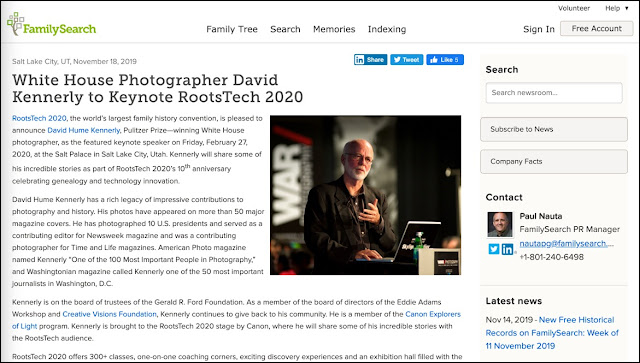 |
| https://www.recordsnotrevenue.com/ |
The resistance of the various government agencies in the United States to make available historically and genealogically important records is well documented and absolutely shamelessly maintained. For years now, Reclaim the Records has been successfully filing Freedom of Information Act court actions to obtain access to records that should be freely and readily available to the public. Now, in the explosively politically controversial area of immigration, the government wants to try a different tactic: raise the cost of obtaining public records to dissuade the public from access to support blatantly political, anti-immigration policies. It cannot be a coincidence that this huge increase in user fees for immigration records is occurring when there is such a huge political battle going on over this very issue.
As I have written many times previously, the Federal government of the United States has no ongoing, comprehensive digitization projects. The National Archives' website talks about their digitization partnerships but the actual number of documents digitized is vanishingly small compared to the huge number still on paper. Now, instead of providing digitized copies, they want us to pay for their irresponsible pile of paper.
Here, quoting the blog post is a summary of what you need to do to have your voice heard.
Step 1: REVIEW
You can also read our summary of the issues and check out some example files to get a better idea of what kinds of records would be impacted.
And you can download this one-page overview (PDF) to share with others.
Step 2: WRITE
Write your comments for the Federal Register, addressing the issues listed here or any issue you think is important. See these conversation starters for thoughts on how to begin. Be sure to specifically note both the Genealogy Program and DHS Docket No. USCIS-2019-0010 in your comments.
Step 3: SEND
Send your comment to the Federal Rulemaking Portal BEFORE 16 DECEMBER 2019 and refer to DHS Docket No. USCIS-2019-0010 and follow instructions for submitting comments.
Send a copy of your comments to your US Senators and Representative, and refer to DHS Docket No. USCIS-2019-0010. Tell them you care about preserving access to federal records!
More about this later. SEE https://www.recordsnotrevenue.com/





















